Deborah J. Ross's Blog, page 141
June 24, 2013
Collaborators – Thinking About Gender
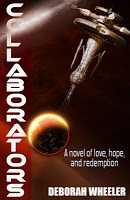
As the concept for Collaborators took shape, I realized
that one of the key issues was power: power that comes from advanced
technology, power that comes from military superiority, power that comes from
idealism, power that comes from love, and power that comes from political
advantage. But also and especially, power that relates to gender. In fact, I
don’t think it’s possible to address the issues of power without talking about
gender.
People – that is, we Terran-humans -- often confuse
gender, sex, and sexual orientation. Sex identification arises from biology,
and most of us are either male or female genetically and phenotypically. That
is, we possess either XX or XY chromosomes, and our genitals conform to the
norm. These are not the only possibilities (you can have XXX or XXY, for
example) and problems arise from the societal demand that every person fit into
one or the other category. This has nothing to do with “masculine” and
“feminine,” which are cultural interpretations, or with who a given individual
is sexually attracted to. The binary division of male and female, while
appropriate for many people, does not work for everyone.
Gender, on the other hand, has to do with how you
experience yourself, a personal sense of being a man or a woman (or both, or
neither). Each of these is distinct from sexual orientation, which has to do
with an enduring physical, romantic, and emotional attraction to another
person. Gender has been described as "who you want to go to bed as, not
who you want to go to bed with."
A few years ago, I attended a workshop at the Ben Lomond
Quaker Center on "Gender, the Search for Self and the Search for
Acceptance," facilitated by Chloe Schwenke, an ethicist who is herself a
transgendered woman. Although much of the workshop centered on personal issues
of gender and identity, it struck me that as a writer, I discover much depth
and richness by asking the same questions.
In science fiction and fantasy, we have been playing
around with such notions as more than two sexes/genders, none, fluid
sexes/genders, and a diversity of gender role expressions. Every so often, a
story that takes a new or not-new-but-splashy look at the field garners a lot
of buzz, particularly in the queer and queer-friendly community. Yet much genre
writing continues to perpetuate the world view of two oppositional and fixed
genders, each with equally unyielding behavioral expectations. For many writers
and readers, a character or society that goes too far outside the familiar
becomes so uncomfortable as to fracture sympathetic identification. It strikes
me, however, that even within the limitations of conventional portrayals of sex
and gender, we can reach for greater depth. We can go beyond the Caveman Model
of Gender Roles, the Separatist All-Men or All-Women Worlds, the
Rambo-in-Drag/Supersensitive Male dichotomies and other variations already done
to death.
To give you an idea what I'm talking about, here are some questions from the
workshop. I've rephrased them to apply to characters, rather than personally.
How does your character know "what" that person is? What feelings,
sensibilities, and other forms of awareness (other than simple body awareness)
most make that person feel male, female, or somewhere in between?
Can you describe your character in non-gendered terms?
Does gender influence the spirituality of your character? How?
Has your character experienced a dissonance between what is expected and what
was felt internally? How does the character deal with this tension? How does
the character's sense of integrity and honesty affect the response?
How does this character (and the surrounding culture) consider the issues of
equality and fairness between the masculine, feminine and androgynous?
How does the character's experience of gender affect the perception of the
Divine, either within or outside the cultural norm?
In writing Collaborators,
I wanted to create a resonance between the tensions arising from First Contact
and those arising from differences in gender and gender expectations. It seemed
to me that one of the most important things we notice about another human being
is whether they are of “our” gender. What if the native race did not divide
themselves into (primarily) two genders? How would that work – biologically? romantically?
socially? politically? How would it affect the division of labor? child-rearing?
How would Terran-humans understand or misinterpret a race for whom every other
age-appropriate person is a potential lover and life-mate? Not only that, but
in a life-paired couple, each is equally likely to engender or gestate a child.
For the sake of linguistic simplicity, I adopted the
convention of using the masculine pronoun as the generic universal for my alien
race. Here’s the opening scene:
Hayke and his two children had carried blankets out to
the hills beyond their farm near the Erlind border. They lay back, eating
leftover potato rolls while the light faded from the sky. Early summer heat
hung in the air, sweet with the smell of the ripening hay. The world softened
into shadow, tone upon tone of layered gray except for the ghostly white of
Hayke’s fur. Night-hoppers chittered. The grass rustled with the passage of a
snake.
Torrey, the older child, had been out in the fields
all day. Sun had bleached the downy fur on his face to platinum, probably his
last season of that pure, shimmering color. He was growing fast. Little Felde
played his pipe to any living thing that would sit still and listen.
Slowly the first pale stars emerged: the Archer, the
Water-Dove, the Serpent, which Wayfolk called the Grommet. Felde loved hearing
the story of the little grommet who sang such wonderful music to the stars that
when he died, they could not bear to lose him. Torrey insisted he was too old
for such tales. Tonight he was hunting other quarry in the skies.
Hayke, lying back on the blanket and gazing up at the
stars, felt an absurd sense of tenderness. He loved both his children, but Felde,
the one he had not carried...Felde was special. Perhaps because Felde was the
last child he and Rosen would ever have, perhaps because it was Rosen who had
borne him... Loss, still poignant after five years, pulsed through Hayke.
“There it is!” Torrey pointed to the northeast at the
unwinking mote of light.
“Sharp eyes,” Hayke said.
Felde snuggled close, curling his arms around Hayke’s
chest. “Are they really people from another star?”
“That’s what they say, little one.”
“Adso says it’s all an Erlind plot,” Torrey said. Adso
was fourteen and Torrey’s closest friend.
“I’m not saying Adso’s wrong-minded,” said Hayke, “but
imagine if you’d never set foot off this farm, never seen anything but hens and
woolies, and then one day someone told you about the great capital city of
Miraz. Thousands of people, all eight clans living together in one place.
Towers and bridges and museums. Trams and temples. You’d think he was making it
up—”
“I’d think his brains were corked!”
“But he’d be telling the truth, wouldn’t he?” said
Hayke.
“Dim-Dim, what’s corked?” Felde piped up.
Torrey choked on his own laughter. Hayke hushed him.
Felde lifted his head. “I’d like to meet the star
people.”
“You, grub?” Torrey said. “What would you do if you
did meet one? Run away howling?”
After a moment, when the night had fallen quiet again
and the stars seemed even closer, Felde said in his child’s voice, “Do you know
what I’d do if I met the star people, Dimmie?”
“No, little one. What would you do?”
“I’d play my music for them.”
Hayke tightened his arms around Felde, felt the
child’s bones like a delicate sculpture, the heartbeat soft and light against
his own. His crest fluttered. He had no words for how very precious this child
was to him. Rosen...Rosen would have loved him very much.
He wished with all his
heart that Rosen had lived to see this night, this unwavering star of hope.
Oh, and should this pique your interest, you can find the book at Amazon and Goodreads and in trade paperback at other online booksellers.

Published on June 24, 2013 01:00
June 18, 2013
Launch Pad Astronomy Workshop needs your help!
As many of you know, I was privileged to attend Launch Pad Astronomy Workshop in 2011. This extraordinary workshop, a college course in astronomy offered over the course of a week, was one of the most intense, exhilarating, and inspiring adventures in bringing excellent science to larger audiences through fiction. Now Launch Pad needs your help to make this experience available to more writers, editors, journalists, artists and more.
Launch Pad is an education/public outreach effort, aimed primarily at writers, filmmakers, and other creative professionals.
At
its best, science fiction can inspire and teach a wide audience about
our universe. At its worst, poorly written fiction can mislead the
public. At Launch Pad, we aim to provide our attendees with a weeklong
Astronomy 101-level course, including a visit and observations through
the University of Wyoming's 2.3-meter telescope.
In previous
years, funding for Launch Pad was made possible through grants from NASA
and the NSF. Due to funding cutbacks, we are asking for your help to
cover our costs and reduce the out of pocket expenses for our attendees.

Published on June 18, 2013 12:29
June 17, 2013
World-building in Collaborators: Add Some Characters

The central inspiration for Collaborators – that individuals respond in a variety of complex
and contradictory ways to a situation of occupation and resistance –
immediately suggested many types of characters: the rebel, the idealist, the
opportunist, the political player, the merchant willing to sell to anyone if
the profit is high enough, sadist who exploits the powerlessness of others for
his own gratification, the ambitious person who doesn’t care who his allies
are, the negotiator, the peace-maker, the patriot.
These are all interesting roles, offering scope for
compelling confrontations, but they are not in themselves characters. They’re slots into which characters might fit at any
given time, as those characters progress along their own life story arcs. The
temptation is to take such a slot, insert a character, and then have him behave
in that way and only in that way throughout the story. This is the classic
“spear-carrier,” whose only function is to come onstage, carry his
spear (or throw it, or make a speech, or die in some plot-appropriate way), and
then disappear. He might have a few warts or wrinkles or a bit of backstory,
but only in service to his predetermined function.
Effective characters work in just the opposite way. They go
about their lives in their idiosyncratic ways, with their own histories and
families, dreams and neuroses. Interesting as these might be, they do not in
themselves constitute a dramatic plot, only a series of linked episodes. Then
something – whether it’s an internal event like a new goal or an external one
like an invasion by a space-faring race – catapults the character into a
dramatic course of action. The overall problem/crisis/goal informs and shapes
the character’s choices, but at the same time the character – her personality,
history, viewpoint, relationships – drives the action in a unique way. So I needed to find out who some of these
characters were, both alien and Terran, throw them into an escalating
situation, and see what they did with it.
One of the first characters to speak to me arose from an
unexpected source. I never knew either of my paternal grandparents, for both
had perished in the lawlessness and pogroms in the Ukraine shortly after the
first World War. My father told me about
how his mother ran a bookstore that was the center of intellectual (and
revolutionary!) thought in their village, how when that village was destroyed,
she kept her two children alive as they wandered the countryside for two years,
going from one cousin’s house to another but never staying very long. He spoke of
her courage, her idealism, and her unfailing love. Some piece of her, or
her-as-remembered, stayed with me, and I wondered if I could create a character
with that strength and devotion to her children. I began to write about Hayke,
who opens the book as he lies in a field with his two children, gazing up at
the stars and wondering what these star-people might be like. Hayke had other
ideas about what his life was like besides merely following in my grandmother’s
footsteps, and everything changed once it became clear to me that the alien
race – the Bandari – were gender-fluid. Hayke, like my grandmother, was a widow
(using the term generically to include both sexes), and one of his children was
born of his own body, but the other of his dead spouse’s, and he told me he
felt an especial tenderness for the latter child.
The other Bandari announced themselves as the storyline took
shape. Alon and Birre, the young lovers, presented a wonderful way to bring the
reader into the world of how Bandari form families, with the added dimension
that they come from different religious traditions, so there are conflicts not
only between the native race and humans, but even within the pair-bonds of the
characters. As events proceeded, with the cycle of violence escalating, each
became radicalized in a different way, according to my initial concept that not
only do people respond in a variety of ways, but their perceptions and
decisions change with experience and evolving circumstances.
Even though the ground action takes place in an area roughly
the size of Western Europe and most of the characters live or come from
Chacarre, I didn’t want all the national territories to be the same. I wanted
differences in language, dress, attitudes toward authority, etc., between
Chacarre and its rival, Erlind, and also within Chacarre itself. Every once in
a while, a new character would surprise me, like Na-chee-nal with his
“barbarian” vigor and his smelly woolen vest, or Lexis, the dangerously repressed
academic poet.
The Terrans presented a different challenge because in many
ways, they were more homogeneous than the Bandari. They inhabit a single
spacecraft and although there is a natural division between crew and scientific
personnel, for the most part their goals are shared and their hierarchies are
well-defined. Left unchecked, that’s a recipe for boring, so I added some
friction, a few divergent motives, a highly stressed environment . . . and into
this walked Dr. Vera Eisenstein, genius. Most of the inspiration for her
character came from the women engineers and physicists I’d gotten to know
(thank you, Society of Women Engineers!) She doesn’t play by anyone’s rules, she cares far more about science
than diplomacy, she’s simply too good at what she does to disregard, and her
mind never stays still. I had a ball cooping her up in the infirmary and
watching what kind of trouble she’d get into, but I didn’t realize at first
that she would become a pivotal character, one capable of acting for the
greatest good despite the depth of her loss. I’d been thinking about her
passion in terms of science, not in terms of her capacity for love nor in terms
of her ruthless commitment to understanding everything she sees around her,
whether it is a problem in laser spectroscopy or alien psychology or the nature
of her own grief.
Oh, and should this pique your interest, you can find the book at Amazon and Goodreads and in trade paperback at other online booksellers.
Next up: Sex? Did She Say Sex? Creating a Gender-Fluid Race

Published on June 17, 2013 01:00
June 11, 2013
BOOK RELEASE: Azkhantian Tales
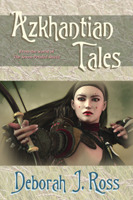
The Seven-Petaled Shield was inspired by four short stories that Marion Zimmer Bradley bought for Sword & Sorceress. Now they're together in one collection (with a gorgeous cover by Dave Smeds!) Here's the skinny:
Across the Azkhantian steppe, warrior women ride to battle against foes both human and supernatural. From the world of The Seven-Petaled Shield come four fantasy tales, originally published in Marion Zimmer Bradley’s Sword & Sorceress.
Prophecy links a mother and daughter in an unbreakable bond.
A young woman defies tradition to become a shaman.
When twins are magically divided, the survivor searches for the other half of her soul.
A warrior woman discovers that to wield a magical blade dishonorably carries a heavy price.
This collection includes a previously-unpublished Introduction and a sneak peek at The Seven-Petaled Shield.
Only $1.99 in DRM-free multi-format from Book View Cafe

Published on June 11, 2013 12:15
June 10, 2013
World-building in Collaborators – “In A City Far, Far Away . . .”

Every story has a beginning, not just in the text itself
but in the mind of the writer. Sometimes we begin with an image or a phrase
that’s so evocative, so mysterious and compelling we just have to find out what
it means. At other times, a character will pop up and demand that her story be
told. Or we’ll look at something quite ordinary and wonder, “What if?” What if
this were different or that happened at another time? What if the rules of
physics worked in ways at odds with accepted reality? What if magic – or
vampires, or angels, or superheroes --
shaped the world?
In this case, my story began with a place. A city. Not
any city, one specific city. My family and I had an opportunity to live in France
for about nine months.
[image error]
We arrived in Lyon in January 1991, shortly after the
beginning of the first Gulf War, and none of us knew quite what to expect. We
were nervous, being Americans abroad at such a tense time. It was (by
California standards) bitterly cold, the streets covered with ice and slush. I
had a little high school French, very rusty, and I’d injured my back before we
left, but I went out every day, getting the kids enrolled in school, finding
out where to buy bread (the corner boulangerie,
of course) and when Rhône Accueil, a sort of international welcome gathering,
met. We had some pretty dreadful days when everyone was sick and not adapted to
the cold or to the French way of doing things. But with patience and open
minds, we settled in. My older daughter attended a private bilingual school,
where she was something of an exotic celebrity, coming from California, and the
younger one soon made herself at home at the école maternelle (and came home chattering in French). I wrote
every day, working on the revision of Northlight.
The snow melted, the sun warmed earth and air, the little
garden of our house blossomed with spring flowers, and the city, which had
seemed cold and distant, opened its arms to us. I suspect the hospitality had
always been there, but it took us a while to come to a place of mutual
appreciation. I also suspect that the improvement in my French, coupled with my
willingness to “adapt myself” to French customs, opened many doors for me. The
Lyonnais were intensely proud of their city and eager to tell me all about it.
And what a city it was! Situated at the confluence of the
Rhône and Saône Rivers, Lyon was once called Lugdunum, the capital of Gaul.
Later it became a hub of the medieval silk trade, a center of culture and
commerce, and finally the heart of the French Resistance to the Nazi
Occupation.
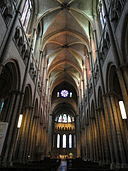
Our house stood on the western hill, where the Romans
built their fort overlooking the peninsula where the two rivers flowed
together. Everywhere in our neighborhood, I’d come across Roman ruins – from
the amphitheatre still in use for summer concerts to bits of aqueduct and
baths. Below us lay the Vieux Quartier,
where people lived and worked in buildings that dated from the Renaissance. The
cathedral, St.-Jean, was begun in the 1080s, took 300 years to complete, and is
still in active use. In its courtyard, I found fragments of a 4th
Century Christian church, and believe that the site was used for a much older
pagan temple. Although I’m not Catholic, I attended Mass from time to time (in
French, of course) to experience the millennium-long continuity of faith
practice. As an American, I had little experience with buildings or artifacts
older than a few centuries, and very few of those were still being used as they
had been originally intended. And, of course, St.-Jean was the place to be seen, to meet people, and to make connections.
As I explored the city, either alone, with Anglophone
friends from Rhône Accueil, or with my family, I was repeatedly struck by how
history permeated every aspect. Some buildings showed damage from cannon balls
during the French Revolution. Plaques marked places where citizens were
executed by the Nazis or Jewish families were deported. Because the buildings
in the older areas form solid blocks, passageways called “traboules” permit
public access and many of them date back to the Renaissance, when they allowed
silk merchants to transport their goods without getting wet on rainy days. “We
French seek to preserve our patrimony,” a Frenchman said to me, “but you
Americans seek to create yours.”
After visiting the tiny Musée de la Résistance, I became interested in how many varied ways
the French responded to the German occupation. Some protested from the very
beginning for religious or ethical reasons, but others went along, whether from
fear or apathy or entrenched anti-Semitism, or simply because the war did not
affect them personally. Yet others sought to exploit the situation for personal
power or financial gain. Some became active only when their lives were
affected.
I was so intrigued by the complexity and range of
responses, the idea of stayed in my mind even when I returned home. When my
older daughter and I returned to Lyon in 1994, the old Musée de la Résistance had been replaced by a modern museum in the
building that had once been used by the Gestapo. The new exhibits gave me even
more information. My daughter and I visited the village of
Le-Chambon-sur-Lignon, featured in the documentary film, Weapons of the Spirit. The Protestants of this village, no
strangers to persecution themselves, saved thousands of Jewish children by
smuggling them into Switzerland and, when asked why they risked their own
lives, replied simply that it was the right thing to do.
I knew then that I had to tell this story. Because I’m
not a writer of history or historical fiction, but of science fiction and
fantasy, I would tell it in the genre I know. I would set my tale on an alien
planet, in an alien city . . . but one that I love even as I had come to love Lyon.
Oh, and should this pique your interest, you can find the book at Amazon and Goodreads and in trade papberback at other online booksellers.

Published on June 10, 2013 01:00
June 7, 2013
ARCHIVES: Where Do You Write?
I've been pondering this question as I shift my writing location. I do this every winter. My primary
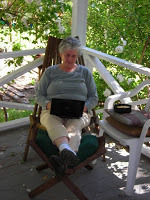 spot
spot
is my office, a little cubbyhole on the north side of the house. In the
summer, it's glorious, with a view of lilac bushes and a beautiful old
California oak. There's even a kestrel house on a pole, although in all
the years since my husband put it up, it has not attracted a resident.
Shaded as it is, and far from a heater vent, it's chilly in the winter.
We've looked at increasing the insulation of the window (double-paned
glass) and the possibility of a small space heater. In the end, though,
my usual solution is to follow the example of birds -- and migrate to a
warmer clime.
The warmer clime is just across the house. A sunny, south-facing bay
window overlooks our garden. It's equipped with a cushy recliner and a
bookshelf (upon which sit two cat baskets) with space for reference
books, writing journals, and a CD player. The cats know this is a Good
Place. I take my netbook there, or a hardcopy manuscript, and curl up in
the sun. I also appreciate being able to shift my position -- first,
sitting
cross-legged, then reclining the chair and propping the netbook or
clipboard on my legs. (And yes, I've been known to tilt the chair even
further back and take a nap!)
I have trained myself not to noodle on the Internet on my netbook unless
I'm traveling. That hasn't been hard, since the little
excuse-for-a-mouse-pad is sufficiently awkward to sue. The habit helps
minimize the distractions I face while at my desk/desktop. Winter
inevitably means less time on the 'webs, or rather, more
efficiently-spent time.
The major drawback of the setup is how hard it is to spring out of the
chair at a moment's notice (as when the phone rings or the cats have
abandoned their sun baths and are up to something naughty). I always go
through this mad scramble to upright the chair and find a safe place to
put the netbook down. I always think, I should bring the portable phone
with me, but then I forget. It's probably just as well, as these
occasions inspire me to break up my work sessions with bursts of
acrobatic physical activity.
Now it's your turn. Where do you write, and why? What works for you? What poses a problem?

 spot
spotis my office, a little cubbyhole on the north side of the house. In the
summer, it's glorious, with a view of lilac bushes and a beautiful old
California oak. There's even a kestrel house on a pole, although in all
the years since my husband put it up, it has not attracted a resident.
Shaded as it is, and far from a heater vent, it's chilly in the winter.
We've looked at increasing the insulation of the window (double-paned
glass) and the possibility of a small space heater. In the end, though,
my usual solution is to follow the example of birds -- and migrate to a
warmer clime.
The warmer clime is just across the house. A sunny, south-facing bay
window overlooks our garden. It's equipped with a cushy recliner and a
bookshelf (upon which sit two cat baskets) with space for reference
books, writing journals, and a CD player. The cats know this is a Good
Place. I take my netbook there, or a hardcopy manuscript, and curl up in
the sun. I also appreciate being able to shift my position -- first,
sitting
cross-legged, then reclining the chair and propping the netbook or
clipboard on my legs. (And yes, I've been known to tilt the chair even
further back and take a nap!)
I have trained myself not to noodle on the Internet on my netbook unless
I'm traveling. That hasn't been hard, since the little
excuse-for-a-mouse-pad is sufficiently awkward to sue. The habit helps
minimize the distractions I face while at my desk/desktop. Winter
inevitably means less time on the 'webs, or rather, more
efficiently-spent time.
The major drawback of the setup is how hard it is to spring out of the
chair at a moment's notice (as when the phone rings or the cats have
abandoned their sun baths and are up to something naughty). I always go
through this mad scramble to upright the chair and find a safe place to
put the netbook down. I always think, I should bring the portable phone
with me, but then I forget. It's probably just as well, as these
occasions inspire me to break up my work sessions with bursts of
acrobatic physical activity.
Now it's your turn. Where do you write, and why? What works for you? What poses a problem?

Published on June 07, 2013 01:00
June 3, 2013
My editor comments on COLLABORATORS

My alter ego, Deborah Wheeler, has just published a science-fiction novel, Collaborators, from Dragon Moon Press. In the weeks to come, I'll be blogging about world-building in this book. First, a word from our sponsor...er, editor. I've always thought it unfair that editors aren't supposed to review the books they've worked on (and I intend to defy that precept myself!)
In her blog, Gabrielle Harbowy writes:
COLLABORATORS does something I’ve never seen in a first contact story.
We’ve got plenty of first contact stories where humans (Terrans) do the
outreach and the aliens have the dominant point of view. But I’d never
seen a premise that thought so deeply about the alien culture and what
sociopolitical chain reactions First Contact would set in motion.
....In COLLABORATORS, the Terrans choose an arbitrary landing spot, and have
no idea that it sparks off an uneasy tension between two rival nations.
The unchosen are immediately suspicious, asking questions like: Why
did the aliens make first contact with them and not with us? Are they
giving them advanced technology to use against us? Are our enemies going
to bias the aliens against us?
.... Deborah gives us a lush world, compassionately populates it with real
and complex beings, and shows her skill as a master craftswoman and
storyteller.
Earlier, I wrote about "unsellable" stories. This was a book that was too good to give up on. It just had to wait for the right editor, the right opening, the right time.
Oh, and should Gabrielle's review pique your interest, you can find the book at Amazon and Goodreads and will be propagating to other online booksellers in the next few weeks.

Published on June 03, 2013 14:33
June 1, 2013
Unsellable Stories?
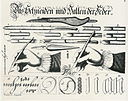
Gabrielle Harbowy, who is both an editor and writer, knows about "unsellable" stories. As an editor, she's acquired and edited novels that had been rejected so many times, the authors were despondent (and some of these have gone on to receive great reviews and award nominations). She's also rejected stories that other editors have picked up.
My own experience of being both author and editor is that things look different "from the other side of the desk." Yes, making editorial decisions about someone else's work has given me insights into why my own editors do that they do, and especially Not To Take Things Personally.
Gabrielle says,
I should know that nothing’s really “unsellable.” I should know it because I see other authors sell pieces that they love but don’t expect the market to welcome. I should know it because I sometimes acquire them. I should know it because I see manuscripts I reject get picked up and lauded by other (and sometimes bigger!) publishers.
And yet, when it comes to my own work, where I’m the author and not the editor, it’s hard to keep that editor objectivity and ego separation from the work. Just like you can’t tickle yourself, you also can’t be objective about your own work. That’s been an interesting and challenging lesson to learn, but I know I’m a stronger writer for having learned it.
Sometimes stories don't sell because they really aren't
good enough, because they have unsurmountable flaws. But sometimes
they're wonderful stories that don't fit the market...or have not yet
found the editor who will love them. As much as I applaud the
proliferation of publishing options that includes self-publishing, I
know all too well from my own experience that (most of the time) I cannot tell the difference.
Having a manuscript rejected is a learning experience, part of a dialog. Early in my career, I learned that form rejection letters were unhelpful. Not discouraging/infuriating but lacking in useful information. Was the story too amateurish? Wrong for the market? Showing great promise but the editor didn't have time to write a note? Then I started getting those personal notes, either scrawled at the bottom of those form rejections or as letters in themselves. Once I got past being upset, I started appreciating what I was learning. As I've gotten more experience -- and I've been at this writing business for three decades now -- I've gotten a better sense of when to quietly slip a story into the trunk and when to set it aside, looking for the right connection-to-an-editor. Always, always, I go on to the next project.
I would never advise a writer not to go immediately to self/indie publishing, because most of the time, I barely have a clue what's the best for me, let alone someone else. For me, dividing rejected stories into "better left unseen" and "I have faith in this one, it's too good to languish" is essential. And for that, I need to try -- and often fail -- to sell it to a professional market.

Published on June 01, 2013 01:00
May 30, 2013
Amazing Fantasy Round Table: 50 Shades of Fantasy
This month's Amazing Fantasy Round Table examines the question of whether modern fantasy comes in shades other than grim and gritty.
Warren Rochelle: Fantasy: How Many Shades of Grey?
All right. I’ve been browsing in The Encyclopedia of Fantasy. I googled “different kinds of
fantasy—and, for the most part, found similar lists and similar terms. I doubt most of those who write for this blog
would be surprised at the terms and definitions I found, such as:
Ø
high fantasy: immersion,
set wholly in the secondary world, “with its own set of rules and physical
laws,” (no connections between here and there). Think Middle-earth.
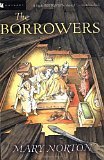 Ø
Ø
low fantasy: “a
sub-genre of fantasy fiction involving nonrational happenings that are without
Low fantasy stories are set either
in the real world or a fictional but rational world, and are contrasted with high
fantasy stories (see above)… The word "low" refers to the level of
prominence of traditional fantasy elements within the work, and is not any sort
of remark on the work's quality” (Wikipedia contributors. "Low
fantasy." (Wikipedia, The Free Encyclopedia. Wikipedia, The Free
Encyclopedia, 27 Mar. 2013. Web. 2 May. 2013.) Examples include The Borrowers, Tuck Everlasting,
The Five Children and It, Edward Eager’s novels, and so on.
causality or rationality because they occur in the rational world where such
things are not supposed to occur.
Ø
epic fantasy, which is
centered on the quest, relies on a heroic main character, stresses the battle
between good and evil, heroes, legendary battles—often called heroic
fantasy. A portal-quest or portal
fantasy could be a variant, with a prime example that of the Chronicles of Narnia.
The lists go on to include contemporary/urban fantasy, anthropomorphic,
historical, dark, science fantasy—you get the idea. Fantasy, all about good vs.
evil, the light versus the dark, heroes and heroines, magic, dragons, and their
ilk, comes in many shades of grey. (50? That’s another essay—see the blog on
sexuality in fantasy, okay?) Then, there
is immersive vs. intrusive and liminal or estranged and … But instead of
defining each and every one, and dredging up examples (which is something I like to do when I teach
fantasy lit—English 379, this fall, 3:30-4:45 TTh, come on down), I want to
talk about the shade of grey I write and why (and yes, grey, the British spelling, and not the American gray. Grey just looks …. well, grey,
and it’s prettier… I digress).
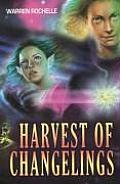
So. What’s my shade of grey? I
have two published fantasy novels, Harvest
of Changelings (Golden Gryphon, 2007) and its sequel, The Called (Golden Gryphon, 2010). A third is being edited, The Golden Boy, and a fourth in progress
even as I write, The Werewolf and His Boy.
They are all, I am thinking, low and intrusive fantasies. True, The Golden Boy is sort of pushing the
above definition of low, as it is set in an alternate reality, that of the
Columbian Empire. Magic is real, but it is illegal, and the Empire is
definitely meant to be a rational country. Magic, does, however, intrude,
according to the Columbian political and religious authorities. But, the
others: this world (more or less), and then magic returns (thus intruding), or
is disclosed in some fashion, voluntarily and otherwise. Harvest and The Called
are set in North Carolina; Werewolf, in
Virginia. Complications ensue—lots of complications. Bad things happen. The
good guys are in serious trouble. Yes, there are forays into Faerie from time
to time, but on the whole, things happen here, not there.
The question of the moment is why, to what end. Part of me has always
wanted to believe in magic (oh, all right, part of me does believe in magic) and that it is real and if we just knew—the
right people, the right words, where to look—we could find it. It’s always been
here. There has to be a reason for all these stories. So, I create fictional
worlds that satisfy this longing. In these worlds the magical and the mundane
intersect, overlap, come into conflict—and I find these encounters fascinating.
As do their real-world counterparts (encountering the unexplainable), such
meetings pull back the veils and reveal us as who and what we really are. They
are meetings in which we are forced to ask the question of what it means to be
human. That some of these encounters are fraught with peril is also part of
this question. To be human is,
sometimes, to be in danger, to be facing great evil, and to have to confront
that evil, albeit the evil is a monster, another human, or a personal darkness.
To be human is to undertake the quest. As Le Guin says in her essay, “The Child
and the Shadow,” “fantasy is the natural, the appropriate language for the
recounting of the spiritual journey and the struggle of good and evil in the
soul”(Language of the Night 64).
In low fantasy, in intrusive fantasy, the metaphor, the myth, the symbol,
the shadow, can be real, literal. It can
be touched, felt, and fought. Russell, a hero of Harvest and The Called,
is an abused child; so is Jeff, his partner. They grew up with people who
behaved monstrously. They also find themselves confronted with evil reptilians
and black witches and other bad guys. They find they have to fight their inner
demons as well as those that wait for them. Could I do this in high fantasy? I
think so, but I am finding it is important to me to acknowledge the darkness
and mystery that is here, in this world.
Good fantasy, after all, is about human beings doing human things, and
with all the ambiguity and trouble and good and evil and love and hate and all
the rest that comes with being human. Yes, they have to deal with the magical,
the impossible, the mystery, the myth made real, but they are still humans—most
of the time, and mostly.
So, I write in this shade of grey because it is here that I live, that my
imagination lives. Oh, yeah, by the way: magic is real.
*****
Warren Rochelle has taught English at the University of Mary Washington since 2000. His short story, "The Golden Boy” (published in The Silver Gryphon) was a Finalist for the 2004 Gaylactic Spectrum Award for Best Short Story and his novels include The Wild Boy (2001), Harvest of Changelings (2007), and The Called (2010. He also published a critical work on Le Guin and has academic articles in various journals and essay collections. His story, “The Boy on McGee Street” was published in Queer Fish 2 (Pink Narcissus Press, 2012). http://warrenrochelle.com
---------------
Andrea Hosth: Grimdark
The last ten years have seen a rise in what
is known as "grimdark fantasy" (or, more amusingly, as
"grittygrotty"). Joe
Abercrombie defines the
core of the genre as:
"The dirt physical and moral. The attention to
unpleasant detail. The greyness of the characters. The cynicism of the
outlook."
There are numerous
articles
discussing
grimdark, covering
everything from what makes it "more real", "less real", "nihilist",
"gratuitous", "honest", or "unimaginative". Most of all, "sexist".
Beyond being a sub-genre I'm disinclined to
read, I'm sure some of my negative reaction to grimdark is due to some of its
champions positing it as an "evolution" of fantasy: something which
has left less evolved, inferior versions of fantasy behind. This both annoys and confuses me.
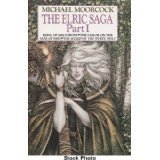
Part of the confusion is due to what I see
as a lack of newness about some of these concepts. Are grimdark protagonists more morally
ambiguous than, say, Elric of Melniboné?
Steerpike of Gormenghast? Heck, Lord
Vetinari of the Discworld? How much more
cynical in outlook are these worlds compared to, say, Mary Gentle's
"Grunts" (a satire of heroic fantasy, but certainly not a recent
one)? Is Leiber's Lankhmar naïve and 'unevolved'?
What exactly has evolved here? Is a willingness to describe people peeing
the big advance we're supposed to find in grimdark?
The other, perhaps larger, source of my
confusion is whether the link made between "grey" and
"real" is supposed to lead to a second link between
"heroic" and "fake".
If the charcoal greyness of the protagonists is the big selling point of
grimdark's advances (ignoring the decades of "pre-grimdark" fantasy featuring
morally grey characters), does it follow on that real heroism does not exist?
The people-are-fundamentally-rotten trope
is common to another genre: post-apocalyptic.
Almost inevitably, post-apocalyptic stories feature small bands of
people, sometimes fighting viciously for resources against other bands, until
their own group dissolves when Untrustworthy-Second-Male produces a schism
against Mr-Reluctantly-In-Charge because he wants to be in charge/to get the
girl/to go that way. My own apocalyptic
story was a direct reaction to how boringly predictable I find this story
progression, and to recent events at the time of drafting – particularly the 2010-2011
Queensland Floods. Here, as with countless
other natural disasters, lives and safety were threatened…and thousands of
people stepped up. Helped out. Behaved heroically.
If we spend the time to look around us, at
the real world, we see villains, we see plenty of morally grey people – a vast
bunch on the paler side of the grey scale.
And we see heroes.
Grimdark is a genre which removes a portion
of the real. To cast a crapsack world as
a "more real" world is to ignore the considerable amount of grey in
large portions of heroic fantasy, and to suggest that the concepts of nobility,
heroism, selflessness, and the rule of law are all weak figments which do not
and never did exist in (historical) reality.
A brief stroll through the myths and
legends which are used as the basis for many modern fantasy stories will show
us that grim and tragic events are hardly new to the genre (try Deidre of the Sorrows on for
size). A passing acquaintance with
history will show us heroes.
*****
Andrea K Höst was born in Sweden but raised in Australia. She writes fantasy and science fantasy, and enjoys creating stories which give her female characters something more to do than wait for rescue.Her website, Autumn Write.
----------------
Sylvia Kelso: Shades of Fantasy
Originally I meant to talk about sub-genres, but I’ve covered
this before, so instead I’ll look at shades in high fantasy, varying by both authors’
style and time. Which logically lets me start with one of the fathers of modern
fantasy, Lord Dunsany. Here’s the intro to his short story, “Carcassonne:”
They say that [Camorak’s]
house at Arn was huge and high, and its ceiling painted blue; and when evening
fell men would climb up by ladders and light the scores of candles hanging from
slender chains. And they say, too, that sometimes a cloud would come, and pour
in through the top of one of the oriel windows, and it would come over the edge
of the stonework as the sea-mist comes over a sheer cliff’s shaven lip where an
old wind has blown for ever and ever (he has swept away thousands of leaves and
thousands of centuries, they are all one to him, he owes no allegiance to
Time).
Writing pre WWI, Dunsany has more than an echo of Yeats’
Celtic twilight: whimsical tone, slightly formal, archaic usages such as the
“they say” beloved of medieval romances. And characteristic of Dunsany, whimsy
extended into a long, flapping, image-ridden sentence that in the wrong hands
could come perilously close to a place in the Bulwer Lytton awards.
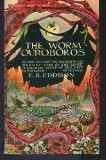
From around the same period we have:
“His highness rode
a hot stirring horse very fierce and dogged; knee to knee with him went
Styrkmir of Blackwood o’ the one side and Tharmrod o’ the other. Neither man
nor horse might stand up before them, and they faring as in a maze now this way
now that, amid the thrumbling and thrasting of the footmen, heads and arms smitten off, men hewn in
sunder from crown to belly, ay, to the saddle, riderless horses maddened, blood
plashed up from the ground like the slush from a marsh.”
Yep, that other Daddy of the Genre, E. R. Edison, from the
chapter “The Battle of Krothering Side,” in The
Worm Ouroboros. And yes, nobody sounds or ever again could sound like Edison. The lavish detail, the exuberance, the outrageous
yet so brilliant faux Elizabethan language is a Phoenix. One of a kind.
The writing in The
Worm actually ranges widely, from battle scenes like this, sounding almost
straight out of Mallory, to the ornate settings, and breathtaking natural beauty
like the sunset that closes this chapter, or the first view of Zimiamvia. But
it’s a good shade away from Dunsany, not least in the ferocity of its focus,
and the equally ferocious insistence of its rhythm.
Now here’s one of the modern heirs of both Edison and
Dunsany. Describing magic outright this time, 70 or so years later, when
fantasy styles have greatly simplified – or been dumbed down, imo – for a far
larger, less literate readership.
Lynn Hall had
changed again. This time she showed me how her secret wood devoured it, in a
monstrous tangle of root and vine that wove into its stones and massed across
its gaping roof. Past and future and the timeless wood scattered broken pieces
of themselves within two rooms. Nial Lynn’s marble floor lay broken and weathered
by the years, even as his blood or Tearle’s flowed darkly across it. A curve of
tree root so thick it must have circled the world had pushed through the floor
beneath Corbet’s table...
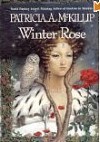
Much plainer than Edison or Dunsany, yes, and yet no less
part of Elsewhere in the starkness of images like the broken marble floor and
the flowing blood, here in service to the time-folding, reality-dissolving effect
so common in McKillip’s work. Yes, Patricia McKillip again, this time from Winter Rose, Chapter Twenty-Three.
And now a particularly famous figure from modern fantasy who
first appeared in the late ‘60s and returned in the 2000s, through his
creator’s trademark mix of utterly everyday details and sudden, yawning vistas
of unreality:
The leaves shook
and the man came briskly down the ladder. He carried a handful of plums, and
when he got off the ladder he batted away a couple of bees drawn by the juice.
He came forward, a short, straight-backed man, grey hair tied back from a
handsome, time-worn face. He looked to be seventy or so. Old scars, four white seams, ran from his
left cheekbone down to the jaw. ( The Other Wind Ch. 1)

Yup, it’s Le Guin’s famous mage, Ged, in his (happier) old
age. Now an almost poverty stricken dweller on the heights above Havnor, with a
plum tree and some goats and chooks – chickens, to American readers – a
handsome old face, and the four scar
marks that invoke his first mortal struggle in the magical world.
In this quote everything looks deceptively simple. Until you
begin to analyse the subtle, resilient rhythms of the prose, and the almost
invisible patterning of assonance and alliteration. If Edison is
the High Priest of Ornament, Le Guin is the Mistress of Understatement.
Further into the present, and not quite high fantasy, here’s
a very good Canadian writer doing urban fantasy at its most attitudinous. It’s
from The Second Summoning, a world
where Keepers use their magic to maintain the fabric of reality against
determined incursions from Hell, below, but sometimes, accidentally, from
Heaven above. In this one, a street evangelist is confronted by a currently
humanly-embodied angel (read the book for the full outrageous details):
“Greenstreet Mission. We’re doing a Christmas dinner. You
can get a meal and hear the word of God.”
Samuel smiled in relief. This, finally, he understood.
“Which word?”
“What?”
“Well, God’s said a
lot of words, you know, and a word like it
or the wouldn’t be worth hearing
again but it’s always fun listening to Him try to say aluminum.” (Ch. 7)
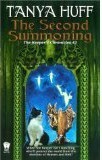
But, I hear you muttering, where are the famously gritty and
dourly “realistic” masters like George R. R. Martin? OK, I confess. I loved Fevre Dream, years ago, but the Thrones
books feel to me like a fantasy version of Stephen King’s gross-out followers.
It’s not realism I find in Martin. Perversely, it’s like King, a “gritty
fantasy” gross-out.
When it comes to gritty, I’d sooner go with another
prize-winning contemporary woman fantasy writer, and the opening of her first
book in the “Chalionverse”:
Cazaril heard the mounted horsemen on the road before he saw
them. He glanced over his shoulder. (Lois McMaster
Bujold The Curse of
Chalion Ch.
1)
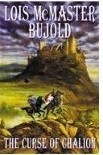
The well-worn track behind him curled up
around a rolling rise, what passed for a hill on these high windy plains,
before dipping again into the late-winter muck of Baocia’s bony soil. At his feet
a little rill, too small and intermittent to rate a culvert or a bridge,
trickled greenly across the track from the sheep-cropped pasture above. The
thump of hooves, jangle of harness, clink of bells, creak of gear and careless
echo of voices came on at too quick a rhythm to be some careful farmer with a
team, or parsimonious pack-men driving their mules.
It’s not over-gritty
– yet. Before the end it will go beyond gritty to grotesque, to appallingly realized
unrealities, like Cazaril’s demon-pregnancy, but here the only signals are in
the landscape. The natural fallacy. Bleakness in the meager messy surroundings foreshadows
Cazaril’s own plight, penniless, dressed in rags, with crookedly healed fingers
and a back thick with flogging lesions, creeping like a beggar toward his last
hope of sanctuary, after a life of war, siege and the galleys that have left
him only the knowledge of “how to prepare a dish of rats.”
I meant to end with a tour de force from the grand master of
modern fantasy, who in one book can do all the shades of tone and voice from
chatty children’s book to King James Version mythology, with epic and romance
and comedy and tragedy in between. But I’ve traveled too often already in the
realms of Tolkien, so I’ll stop here, with the grit under Cazaril’s sandals, only
one of my particular favourites among fantasy’s more than fifty shades.
* * *
* *
Sylvia Kelso lives in North Queensland, Australia, and writes fantasy and
SF set mostly in analogue or alternate Australian settings. She has published
six fantasy novels, two of which were finalists for best fantasy novel of the
year in the Australian Aurealis genre fiction awards, and some stories in
Australian and US anthologies. Her latest short story, “At Sunset” appears in Luna Station Quarterly for
September 2012. “The Honor of the Ferrocarril” is forthcoming in Gears and
Levers 3 from Skywarrior Press, and “Spring in Geneva,” a novella riff on Frankenstein, is projected to appear
from Aqueduct Press in August 2013.
------------
Carole McDonnell: Shades
This month's blog tour is called Shades of Fantasy -- a perfect title, I think. Because what is shading, exactly?
There
are shades of evil, shades of humanness, shades of power, shades of the
psyche, shades of power, shades of spatiality, shades of time, shades of
intelligence and different kinds of intelligences, shades of sexuality
and gender, shades of cultures, shades of life and non-life. Each
shading can bring us closer to the darkness in the universe or in
humanity. It can also bring us closer to the light.
Depending
on the writer, any of these shadings can be explored. A good fantasy
book will show its reader so many shadings of its theme that the book
and its issues will forever linger in the reader's mind. For better or
for worse or for all the shadings in between.
*****
Carole McDonnell is a writer of ethnic fiction, speculative fiction, and
Christian fiction. Her works have appeared in many anthologies and at
various online sites. Her first novel, Wind Follower, was published by Wildside Books. Her forthcoming novel is called The Constant Tower. http://carolemcdonnell.blogspot.com/
---------------
Here's my own essay: Fantasy –A Long View of the Gritty, and Hope for the
Numinous
At first, I thought the current fashion of dark, gritty
fantasy – fantasy noir – is just
that, a recent shift in popularity, like the explosion of angsty teenage
vampire stories. If we take the long view, it’s an established variation in a
much larger genre. Historically, fantasy’s appeal was as tales of wonder, from
Homer’s Odyssey (a “tall tales” story
if there ever was one) to Tolkien’s The
Lord of the Rings. Scary things certainly do happen in these stories and much
is at risk, but the tone is elevated and the sensibilities are distinctly
romantic. I suspect that one reason movie-goers who loved Peter Jackson’s
adaptation of The Lord of the Rings
and found the novels unengaging was the somewhat old-fashioned “epic” level of
prose, very much in line with the mythic tradition Tolkien is so much a part of
and yet foreign-sounding and artificial when placed in the context of
contemporary “realistic” literature. In this, Tolkien’s work has much more in
common with Beowulf than with The Dresden Files.
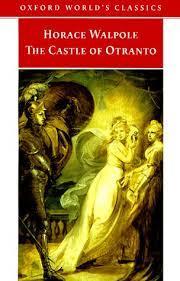
Spooky stories like the early Gothic novels such as Horace
Walpole’s The Castle of Otranto
(1764), Matthew Gregory Lewis's The Monk (1796), the works of Edgar
Allen Poe or Mary Shelley’s Frankenstein
(1818) approached the fantastical as other-worldly, making no pretense of
portraying the seedier side of everyday reality. In Germany, Gothic fiction was
called Schauerroman (“shudder
novel”), in the sense of a delicious fascination with the macabre. Black magic,
occult rites, vampires and ghosts, haunted castles, “the sins of the fathers,”
Byronic heroes, ancient curses and the like pervaded these works.
Even stories that sought to balance supernatural elements
and realistic settings could in no way be described as “gritty.” As time went
on and literary tastes changed, the macabre or horrific elements shifted to
include “explained supernatural” and psychological horror. What constitutes
“realistic setting” has evolved from 18th Century drawing rooms to
the streets and skyscrapers of modern urban fantasy.
Contemporary gritty fantasy, whether in an urban setting or
not, has been influenced by the larger movements in 20th and 21st
Century literature. The Cold War fostered the twin sensibilities of paranoia
and impending disaster, giving rise to generations of apocalyptic and
post-apocalyptic stories. I don’t think Ann Radcliffe or William Polidori, or
even Robert Louis Stevenson would have dreamt of the bombed-out cities,
virulent plagues, social disruption, and ecological collapse that characterizes
modern dystopic fiction. Taking this thought a step further, I see the
transformation of the zombie from a figure in voodoo religious rites to
yet-another-monster to the victim of an epidemic, to one of hordes that walk
the streets and break down doors, infecting everyone they bite, with all the
attendant end-of-the-world you-will-be-eaten-next tropes. As a person who
remembers the McCarthy Era, I see a chilling parallel in the underlying themes
of contagion and loss of humanity. In this way, what we see in gritty fantasy
today, particularly the dystopic and urban flavors, reflects the fears rampant
in recent history.
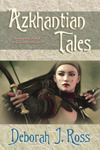
At the same time, although it has occasionally fallen out of
popular favor, epic fantasy, whimsical fantasy, fantasy that echoes spiritual
or religious themes of hope and redemption, not to mention beautiful magic and
romance, has not gone away. I think readers (and writers!) respond to the
optimism and portrayal of courage, loyalty, and imagination in these tales.
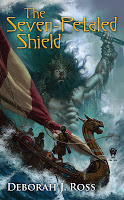
I first got the idea for my own epic fantasy trilogy from a
series of short stories that were published in Marion Zimmer Bradley’s Sword & Sorceress series. I love
horses and was intrigued by the cultural clash between the Romans with their
cities and disciplined infantry, and the nomadic horse peoples of Asia – the
Scythians, Sarmatians, and others. I wondered how these two very different
cultures might give rise to different systems of magic as well as different
military strategies. One story (the first one being “The Spirit Arrow” in S & S XIII) wasn’t enough! I fell in
love with the vast reaches of the steppe, the nature-based religion of the
nomads, the lore of horses. This isn’t so different from what Tolkien
envisioned in the Rohirrim of Rohan, although I came at it from a different
historical context. As one story followed another, “Rome” deepened and became
less of a monolithic enemy and more of a culture to be admired. In order to
create the complexity of conflicts necessary for a work of novel length, I
added an ancient city-state, guardian of the magical devices that once
protected the living world from the forces of chaos. All this was background
for the real story, the adventures of a handful of characters as they make
their way through this world, each with her or his own goals and follies. I was
off and running with The Seven-Petaled
Shield. The first volume comes out in June 2013.

Warren Rochelle: Fantasy: How Many Shades of Grey?
All right. I’ve been browsing in The Encyclopedia of Fantasy. I googled “different kinds of
fantasy—and, for the most part, found similar lists and similar terms. I doubt most of those who write for this blog
would be surprised at the terms and definitions I found, such as:
Ø
high fantasy: immersion,
set wholly in the secondary world, “with its own set of rules and physical
laws,” (no connections between here and there). Think Middle-earth.
 Ø
Ø low fantasy: “a
sub-genre of fantasy fiction involving nonrational happenings that are without
Low fantasy stories are set either
in the real world or a fictional but rational world, and are contrasted with high
fantasy stories (see above)… The word "low" refers to the level of
prominence of traditional fantasy elements within the work, and is not any sort
of remark on the work's quality” (Wikipedia contributors. "Low
fantasy." (Wikipedia, The Free Encyclopedia. Wikipedia, The Free
Encyclopedia, 27 Mar. 2013. Web. 2 May. 2013.) Examples include The Borrowers, Tuck Everlasting,
The Five Children and It, Edward Eager’s novels, and so on.
causality or rationality because they occur in the rational world where such
things are not supposed to occur.
Ø
epic fantasy, which is
centered on the quest, relies on a heroic main character, stresses the battle
between good and evil, heroes, legendary battles—often called heroic
fantasy. A portal-quest or portal
fantasy could be a variant, with a prime example that of the Chronicles of Narnia.
The lists go on to include contemporary/urban fantasy, anthropomorphic,
historical, dark, science fantasy—you get the idea. Fantasy, all about good vs.
evil, the light versus the dark, heroes and heroines, magic, dragons, and their
ilk, comes in many shades of grey. (50? That’s another essay—see the blog on
sexuality in fantasy, okay?) Then, there
is immersive vs. intrusive and liminal or estranged and … But instead of
defining each and every one, and dredging up examples (which is something I like to do when I teach
fantasy lit—English 379, this fall, 3:30-4:45 TTh, come on down), I want to
talk about the shade of grey I write and why (and yes, grey, the British spelling, and not the American gray. Grey just looks …. well, grey,
and it’s prettier… I digress).

So. What’s my shade of grey? I
have two published fantasy novels, Harvest
of Changelings (Golden Gryphon, 2007) and its sequel, The Called (Golden Gryphon, 2010). A third is being edited, The Golden Boy, and a fourth in progress
even as I write, The Werewolf and His Boy.
They are all, I am thinking, low and intrusive fantasies. True, The Golden Boy is sort of pushing the
above definition of low, as it is set in an alternate reality, that of the
Columbian Empire. Magic is real, but it is illegal, and the Empire is
definitely meant to be a rational country. Magic, does, however, intrude,
according to the Columbian political and religious authorities. But, the
others: this world (more or less), and then magic returns (thus intruding), or
is disclosed in some fashion, voluntarily and otherwise. Harvest and The Called
are set in North Carolina; Werewolf, in
Virginia. Complications ensue—lots of complications. Bad things happen. The
good guys are in serious trouble. Yes, there are forays into Faerie from time
to time, but on the whole, things happen here, not there.
The question of the moment is why, to what end. Part of me has always
wanted to believe in magic (oh, all right, part of me does believe in magic) and that it is real and if we just knew—the
right people, the right words, where to look—we could find it. It’s always been
here. There has to be a reason for all these stories. So, I create fictional
worlds that satisfy this longing. In these worlds the magical and the mundane
intersect, overlap, come into conflict—and I find these encounters fascinating.
As do their real-world counterparts (encountering the unexplainable), such
meetings pull back the veils and reveal us as who and what we really are. They
are meetings in which we are forced to ask the question of what it means to be
human. That some of these encounters are fraught with peril is also part of
this question. To be human is,
sometimes, to be in danger, to be facing great evil, and to have to confront
that evil, albeit the evil is a monster, another human, or a personal darkness.
To be human is to undertake the quest. As Le Guin says in her essay, “The Child
and the Shadow,” “fantasy is the natural, the appropriate language for the
recounting of the spiritual journey and the struggle of good and evil in the
soul”(Language of the Night 64).
In low fantasy, in intrusive fantasy, the metaphor, the myth, the symbol,
the shadow, can be real, literal. It can
be touched, felt, and fought. Russell, a hero of Harvest and The Called,
is an abused child; so is Jeff, his partner. They grew up with people who
behaved monstrously. They also find themselves confronted with evil reptilians
and black witches and other bad guys. They find they have to fight their inner
demons as well as those that wait for them. Could I do this in high fantasy? I
think so, but I am finding it is important to me to acknowledge the darkness
and mystery that is here, in this world.
Good fantasy, after all, is about human beings doing human things, and
with all the ambiguity and trouble and good and evil and love and hate and all
the rest that comes with being human. Yes, they have to deal with the magical,
the impossible, the mystery, the myth made real, but they are still humans—most
of the time, and mostly.
So, I write in this shade of grey because it is here that I live, that my
imagination lives. Oh, yeah, by the way: magic is real.
*****
Warren Rochelle has taught English at the University of Mary Washington since 2000. His short story, "The Golden Boy” (published in The Silver Gryphon) was a Finalist for the 2004 Gaylactic Spectrum Award for Best Short Story and his novels include The Wild Boy (2001), Harvest of Changelings (2007), and The Called (2010. He also published a critical work on Le Guin and has academic articles in various journals and essay collections. His story, “The Boy on McGee Street” was published in Queer Fish 2 (Pink Narcissus Press, 2012). http://warrenrochelle.com
---------------
Andrea Hosth: Grimdark
The last ten years have seen a rise in what
is known as "grimdark fantasy" (or, more amusingly, as
"grittygrotty"). Joe
Abercrombie defines the
core of the genre as:
"The dirt physical and moral. The attention to
unpleasant detail. The greyness of the characters. The cynicism of the
outlook."
There are numerous
articles
discussing
grimdark, covering
everything from what makes it "more real", "less real", "nihilist",
"gratuitous", "honest", or "unimaginative". Most of all, "sexist".
Beyond being a sub-genre I'm disinclined to
read, I'm sure some of my negative reaction to grimdark is due to some of its
champions positing it as an "evolution" of fantasy: something which
has left less evolved, inferior versions of fantasy behind. This both annoys and confuses me.

Part of the confusion is due to what I see
as a lack of newness about some of these concepts. Are grimdark protagonists more morally
ambiguous than, say, Elric of Melniboné?
Steerpike of Gormenghast? Heck, Lord
Vetinari of the Discworld? How much more
cynical in outlook are these worlds compared to, say, Mary Gentle's
"Grunts" (a satire of heroic fantasy, but certainly not a recent
one)? Is Leiber's Lankhmar naïve and 'unevolved'?
What exactly has evolved here? Is a willingness to describe people peeing
the big advance we're supposed to find in grimdark?
The other, perhaps larger, source of my
confusion is whether the link made between "grey" and
"real" is supposed to lead to a second link between
"heroic" and "fake".
If the charcoal greyness of the protagonists is the big selling point of
grimdark's advances (ignoring the decades of "pre-grimdark" fantasy featuring
morally grey characters), does it follow on that real heroism does not exist?
The people-are-fundamentally-rotten trope
is common to another genre: post-apocalyptic.
Almost inevitably, post-apocalyptic stories feature small bands of
people, sometimes fighting viciously for resources against other bands, until
their own group dissolves when Untrustworthy-Second-Male produces a schism
against Mr-Reluctantly-In-Charge because he wants to be in charge/to get the
girl/to go that way. My own apocalyptic
story was a direct reaction to how boringly predictable I find this story
progression, and to recent events at the time of drafting – particularly the 2010-2011
Queensland Floods. Here, as with countless
other natural disasters, lives and safety were threatened…and thousands of
people stepped up. Helped out. Behaved heroically.
If we spend the time to look around us, at
the real world, we see villains, we see plenty of morally grey people – a vast
bunch on the paler side of the grey scale.
And we see heroes.
Grimdark is a genre which removes a portion
of the real. To cast a crapsack world as
a "more real" world is to ignore the considerable amount of grey in
large portions of heroic fantasy, and to suggest that the concepts of nobility,
heroism, selflessness, and the rule of law are all weak figments which do not
and never did exist in (historical) reality.
A brief stroll through the myths and
legends which are used as the basis for many modern fantasy stories will show
us that grim and tragic events are hardly new to the genre (try Deidre of the Sorrows on for
size). A passing acquaintance with
history will show us heroes.
*****
Andrea K Höst was born in Sweden but raised in Australia. She writes fantasy and science fantasy, and enjoys creating stories which give her female characters something more to do than wait for rescue.Her website, Autumn Write.
----------------
Sylvia Kelso: Shades of Fantasy
Originally I meant to talk about sub-genres, but I’ve covered
this before, so instead I’ll look at shades in high fantasy, varying by both authors’
style and time. Which logically lets me start with one of the fathers of modern
fantasy, Lord Dunsany. Here’s the intro to his short story, “Carcassonne:”
They say that [Camorak’s]
house at Arn was huge and high, and its ceiling painted blue; and when evening
fell men would climb up by ladders and light the scores of candles hanging from
slender chains. And they say, too, that sometimes a cloud would come, and pour
in through the top of one of the oriel windows, and it would come over the edge
of the stonework as the sea-mist comes over a sheer cliff’s shaven lip where an
old wind has blown for ever and ever (he has swept away thousands of leaves and
thousands of centuries, they are all one to him, he owes no allegiance to
Time).
Writing pre WWI, Dunsany has more than an echo of Yeats’
Celtic twilight: whimsical tone, slightly formal, archaic usages such as the
“they say” beloved of medieval romances. And characteristic of Dunsany, whimsy
extended into a long, flapping, image-ridden sentence that in the wrong hands
could come perilously close to a place in the Bulwer Lytton awards.

From around the same period we have:
“His highness rode
a hot stirring horse very fierce and dogged; knee to knee with him went
Styrkmir of Blackwood o’ the one side and Tharmrod o’ the other. Neither man
nor horse might stand up before them, and they faring as in a maze now this way
now that, amid the thrumbling and thrasting of the footmen, heads and arms smitten off, men hewn in
sunder from crown to belly, ay, to the saddle, riderless horses maddened, blood
plashed up from the ground like the slush from a marsh.”
Yep, that other Daddy of the Genre, E. R. Edison, from the
chapter “The Battle of Krothering Side,” in The
Worm Ouroboros. And yes, nobody sounds or ever again could sound like Edison. The lavish detail, the exuberance, the outrageous
yet so brilliant faux Elizabethan language is a Phoenix. One of a kind.
The writing in The
Worm actually ranges widely, from battle scenes like this, sounding almost
straight out of Mallory, to the ornate settings, and breathtaking natural beauty
like the sunset that closes this chapter, or the first view of Zimiamvia. But
it’s a good shade away from Dunsany, not least in the ferocity of its focus,
and the equally ferocious insistence of its rhythm.
Now here’s one of the modern heirs of both Edison and
Dunsany. Describing magic outright this time, 70 or so years later, when
fantasy styles have greatly simplified – or been dumbed down, imo – for a far
larger, less literate readership.
Lynn Hall had
changed again. This time she showed me how her secret wood devoured it, in a
monstrous tangle of root and vine that wove into its stones and massed across
its gaping roof. Past and future and the timeless wood scattered broken pieces
of themselves within two rooms. Nial Lynn’s marble floor lay broken and weathered
by the years, even as his blood or Tearle’s flowed darkly across it. A curve of
tree root so thick it must have circled the world had pushed through the floor
beneath Corbet’s table...

Much plainer than Edison or Dunsany, yes, and yet no less
part of Elsewhere in the starkness of images like the broken marble floor and
the flowing blood, here in service to the time-folding, reality-dissolving effect
so common in McKillip’s work. Yes, Patricia McKillip again, this time from Winter Rose, Chapter Twenty-Three.
And now a particularly famous figure from modern fantasy who
first appeared in the late ‘60s and returned in the 2000s, through his
creator’s trademark mix of utterly everyday details and sudden, yawning vistas
of unreality:
The leaves shook
and the man came briskly down the ladder. He carried a handful of plums, and
when he got off the ladder he batted away a couple of bees drawn by the juice.
He came forward, a short, straight-backed man, grey hair tied back from a
handsome, time-worn face. He looked to be seventy or so. Old scars, four white seams, ran from his
left cheekbone down to the jaw. ( The Other Wind Ch. 1)

Yup, it’s Le Guin’s famous mage, Ged, in his (happier) old
age. Now an almost poverty stricken dweller on the heights above Havnor, with a
plum tree and some goats and chooks – chickens, to American readers – a
handsome old face, and the four scar
marks that invoke his first mortal struggle in the magical world.
In this quote everything looks deceptively simple. Until you
begin to analyse the subtle, resilient rhythms of the prose, and the almost
invisible patterning of assonance and alliteration. If Edison is
the High Priest of Ornament, Le Guin is the Mistress of Understatement.
Further into the present, and not quite high fantasy, here’s
a very good Canadian writer doing urban fantasy at its most attitudinous. It’s
from The Second Summoning, a world
where Keepers use their magic to maintain the fabric of reality against
determined incursions from Hell, below, but sometimes, accidentally, from
Heaven above. In this one, a street evangelist is confronted by a currently
humanly-embodied angel (read the book for the full outrageous details):
“Greenstreet Mission. We’re doing a Christmas dinner. You
can get a meal and hear the word of God.”
Samuel smiled in relief. This, finally, he understood.
“Which word?”
“What?”
“Well, God’s said a
lot of words, you know, and a word like it
or the wouldn’t be worth hearing
again but it’s always fun listening to Him try to say aluminum.” (Ch. 7)

But, I hear you muttering, where are the famously gritty and
dourly “realistic” masters like George R. R. Martin? OK, I confess. I loved Fevre Dream, years ago, but the Thrones
books feel to me like a fantasy version of Stephen King’s gross-out followers.
It’s not realism I find in Martin. Perversely, it’s like King, a “gritty
fantasy” gross-out.
When it comes to gritty, I’d sooner go with another
prize-winning contemporary woman fantasy writer, and the opening of her first
book in the “Chalionverse”:
Cazaril heard the mounted horsemen on the road before he saw
them. He glanced over his shoulder. (Lois McMaster
Bujold The Curse of
Chalion Ch.
1)

The well-worn track behind him curled up
around a rolling rise, what passed for a hill on these high windy plains,
before dipping again into the late-winter muck of Baocia’s bony soil. At his feet
a little rill, too small and intermittent to rate a culvert or a bridge,
trickled greenly across the track from the sheep-cropped pasture above. The
thump of hooves, jangle of harness, clink of bells, creak of gear and careless
echo of voices came on at too quick a rhythm to be some careful farmer with a
team, or parsimonious pack-men driving their mules.
It’s not over-gritty
– yet. Before the end it will go beyond gritty to grotesque, to appallingly realized
unrealities, like Cazaril’s demon-pregnancy, but here the only signals are in
the landscape. The natural fallacy. Bleakness in the meager messy surroundings foreshadows
Cazaril’s own plight, penniless, dressed in rags, with crookedly healed fingers
and a back thick with flogging lesions, creeping like a beggar toward his last
hope of sanctuary, after a life of war, siege and the galleys that have left
him only the knowledge of “how to prepare a dish of rats.”
I meant to end with a tour de force from the grand master of
modern fantasy, who in one book can do all the shades of tone and voice from
chatty children’s book to King James Version mythology, with epic and romance
and comedy and tragedy in between. But I’ve traveled too often already in the
realms of Tolkien, so I’ll stop here, with the grit under Cazaril’s sandals, only
one of my particular favourites among fantasy’s more than fifty shades.
* * *
* *
Sylvia Kelso lives in North Queensland, Australia, and writes fantasy and
SF set mostly in analogue or alternate Australian settings. She has published
six fantasy novels, two of which were finalists for best fantasy novel of the
year in the Australian Aurealis genre fiction awards, and some stories in
Australian and US anthologies. Her latest short story, “At Sunset” appears in Luna Station Quarterly for
September 2012. “The Honor of the Ferrocarril” is forthcoming in Gears and
Levers 3 from Skywarrior Press, and “Spring in Geneva,” a novella riff on Frankenstein, is projected to appear
from Aqueduct Press in August 2013.
------------
Carole McDonnell: Shades
This month's blog tour is called Shades of Fantasy -- a perfect title, I think. Because what is shading, exactly?
There
are shades of evil, shades of humanness, shades of power, shades of the
psyche, shades of power, shades of spatiality, shades of time, shades of
intelligence and different kinds of intelligences, shades of sexuality
and gender, shades of cultures, shades of life and non-life. Each
shading can bring us closer to the darkness in the universe or in
humanity. It can also bring us closer to the light.
Depending
on the writer, any of these shadings can be explored. A good fantasy
book will show its reader so many shadings of its theme that the book
and its issues will forever linger in the reader's mind. For better or
for worse or for all the shadings in between.
*****
Carole McDonnell is a writer of ethnic fiction, speculative fiction, and
Christian fiction. Her works have appeared in many anthologies and at
various online sites. Her first novel, Wind Follower, was published by Wildside Books. Her forthcoming novel is called The Constant Tower. http://carolemcdonnell.blogspot.com/
---------------
Here's my own essay: Fantasy –A Long View of the Gritty, and Hope for the
Numinous
At first, I thought the current fashion of dark, gritty
fantasy – fantasy noir – is just
that, a recent shift in popularity, like the explosion of angsty teenage
vampire stories. If we take the long view, it’s an established variation in a
much larger genre. Historically, fantasy’s appeal was as tales of wonder, from
Homer’s Odyssey (a “tall tales” story
if there ever was one) to Tolkien’s The
Lord of the Rings. Scary things certainly do happen in these stories and much
is at risk, but the tone is elevated and the sensibilities are distinctly
romantic. I suspect that one reason movie-goers who loved Peter Jackson’s
adaptation of The Lord of the Rings
and found the novels unengaging was the somewhat old-fashioned “epic” level of
prose, very much in line with the mythic tradition Tolkien is so much a part of
and yet foreign-sounding and artificial when placed in the context of
contemporary “realistic” literature. In this, Tolkien’s work has much more in
common with Beowulf than with The Dresden Files.

Spooky stories like the early Gothic novels such as Horace
Walpole’s The Castle of Otranto
(1764), Matthew Gregory Lewis's The Monk (1796), the works of Edgar
Allen Poe or Mary Shelley’s Frankenstein
(1818) approached the fantastical as other-worldly, making no pretense of
portraying the seedier side of everyday reality. In Germany, Gothic fiction was
called Schauerroman (“shudder
novel”), in the sense of a delicious fascination with the macabre. Black magic,
occult rites, vampires and ghosts, haunted castles, “the sins of the fathers,”
Byronic heroes, ancient curses and the like pervaded these works.
Even stories that sought to balance supernatural elements
and realistic settings could in no way be described as “gritty.” As time went
on and literary tastes changed, the macabre or horrific elements shifted to
include “explained supernatural” and psychological horror. What constitutes
“realistic setting” has evolved from 18th Century drawing rooms to
the streets and skyscrapers of modern urban fantasy.
Contemporary gritty fantasy, whether in an urban setting or
not, has been influenced by the larger movements in 20th and 21st
Century literature. The Cold War fostered the twin sensibilities of paranoia
and impending disaster, giving rise to generations of apocalyptic and
post-apocalyptic stories. I don’t think Ann Radcliffe or William Polidori, or
even Robert Louis Stevenson would have dreamt of the bombed-out cities,
virulent plagues, social disruption, and ecological collapse that characterizes
modern dystopic fiction. Taking this thought a step further, I see the
transformation of the zombie from a figure in voodoo religious rites to
yet-another-monster to the victim of an epidemic, to one of hordes that walk
the streets and break down doors, infecting everyone they bite, with all the
attendant end-of-the-world you-will-be-eaten-next tropes. As a person who
remembers the McCarthy Era, I see a chilling parallel in the underlying themes
of contagion and loss of humanity. In this way, what we see in gritty fantasy
today, particularly the dystopic and urban flavors, reflects the fears rampant
in recent history.

At the same time, although it has occasionally fallen out of
popular favor, epic fantasy, whimsical fantasy, fantasy that echoes spiritual
or religious themes of hope and redemption, not to mention beautiful magic and
romance, has not gone away. I think readers (and writers!) respond to the
optimism and portrayal of courage, loyalty, and imagination in these tales.

I first got the idea for my own epic fantasy trilogy from a
series of short stories that were published in Marion Zimmer Bradley’s Sword & Sorceress series. I love
horses and was intrigued by the cultural clash between the Romans with their
cities and disciplined infantry, and the nomadic horse peoples of Asia – the
Scythians, Sarmatians, and others. I wondered how these two very different
cultures might give rise to different systems of magic as well as different
military strategies. One story (the first one being “The Spirit Arrow” in S & S XIII) wasn’t enough! I fell in
love with the vast reaches of the steppe, the nature-based religion of the
nomads, the lore of horses. This isn’t so different from what Tolkien
envisioned in the Rohirrim of Rohan, although I came at it from a different
historical context. As one story followed another, “Rome” deepened and became
less of a monolithic enemy and more of a culture to be admired. In order to
create the complexity of conflicts necessary for a work of novel length, I
added an ancient city-state, guardian of the magical devices that once
protected the living world from the forces of chaos. All this was background
for the real story, the adventures of a handful of characters as they make
their way through this world, each with her or his own goals and follies. I was
off and running with The Seven-Petaled
Shield. The first volume comes out in June 2013.

Published on May 30, 2013 18:30
May 29, 2013
ARCHIVES: What We Lose, What We Gain
Some things are worth repeating. This post was originally published in December 2011.
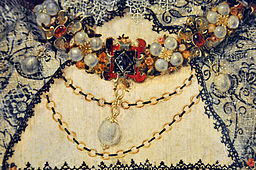
Some years ago - like maybe a decade - most of my jewelry was stolen.
None of it was very valuable, although there were some pearls and jade
and a little amber, and a lovely pair of moonstone stud earrings. But,
as is the way of things, each piece had a story that was part of my
life. That was the real value, and hence the deepest loss. I'd had some
of them since my childhood, and some had been gifts from loved ones
who've since died. Some of it was my mother's.
I went through the expected rage and frenzy, scouring local flea markets
in the forlorn hope that I might spot a piece or two. Of course, I did
not. When that stage had run its course, the police report filed (and,
doubtless, forgotten), anger turned to grief, and grief to acceptance,
and acceptance to looking in a new way at what I'd lost.
I wrote in my journal that the thieves had taken bits of minerals,
crystals, shells, and fossilized tree sap, but they could not steal:
the stories in my mind
the books I've written
my children
the redwoods
my dreams
my friends
their kindness and generosity to me
my capacity for joy...
Slowly, over the years, I have acquired a new collection. It's smaller
and more suited to who I am now. I discovered a few things from my
mother, tucked away in an old cigar box with some broken bits and things
I didn't wear. Friends and family surprised me with simple, beautiful
pieces: a strand of black pearls, an amber pendant, a necklace of silver
and garnet dangles, a pair of tiny, amazingly delicate garnet earrings. I went
through a period of needing "replacements," and then letting them go. My
daughters and I have swapped a number of pairs of earrings. It's such a
delight to pass them on. And to realize I don't truly need any of this.
What I need are the people I love, and who love me. What I need is to
write the stories in my heart. What I need is to work for a better world
for everyone.
I look at what I have, what I have lost, what cannot be taken from me,
what I have gained. Yes, I enjoy beautiful things. But how much more
precious are the memories that come with them.


Some years ago - like maybe a decade - most of my jewelry was stolen.
None of it was very valuable, although there were some pearls and jade
and a little amber, and a lovely pair of moonstone stud earrings. But,
as is the way of things, each piece had a story that was part of my
life. That was the real value, and hence the deepest loss. I'd had some
of them since my childhood, and some had been gifts from loved ones
who've since died. Some of it was my mother's.
I went through the expected rage and frenzy, scouring local flea markets
in the forlorn hope that I might spot a piece or two. Of course, I did
not. When that stage had run its course, the police report filed (and,
doubtless, forgotten), anger turned to grief, and grief to acceptance,
and acceptance to looking in a new way at what I'd lost.
I wrote in my journal that the thieves had taken bits of minerals,
crystals, shells, and fossilized tree sap, but they could not steal:
the stories in my mind
the books I've written
my children
the redwoods
my dreams
my friends
their kindness and generosity to me
my capacity for joy...
Slowly, over the years, I have acquired a new collection. It's smaller
and more suited to who I am now. I discovered a few things from my
mother, tucked away in an old cigar box with some broken bits and things
I didn't wear. Friends and family surprised me with simple, beautiful
pieces: a strand of black pearls, an amber pendant, a necklace of silver
and garnet dangles, a pair of tiny, amazingly delicate garnet earrings. I went
through a period of needing "replacements," and then letting them go. My
daughters and I have swapped a number of pairs of earrings. It's such a
delight to pass them on. And to realize I don't truly need any of this.
What I need are the people I love, and who love me. What I need is to
write the stories in my heart. What I need is to work for a better world
for everyone.
I look at what I have, what I have lost, what cannot be taken from me,
what I have gained. Yes, I enjoy beautiful things. But how much more
precious are the memories that come with them.

Published on May 29, 2013 01:00



